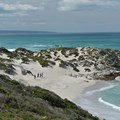
Subscribe & Follow
#AfricaMonth
In the news
Whiling away days at De Hoop - a nature lover's respite
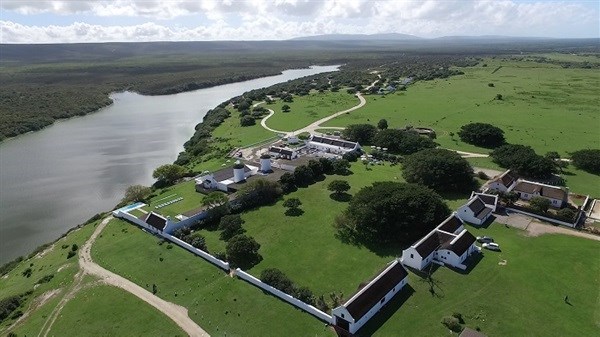
The visually stunning and diverse landscape of Cape Nature’s flagship 34,000-hectare reserve provides the ideal setting for hours of exploration. From the sea and sand dunes, an expansive vlei and the Potberg Mountains, to the bountiful fauna and flora, De Hoop is a playground for outdoor enthusiasts.
The area is well-known as the start or end point of the picturesque five-day Whale Trail slackpacking hike, so named because De Hoop’s marine reserve is a well-known breeding ground for the southern right whale. About 120 of them return to these waters every year to mate and calve, making the reserve a popular base for land-based whale watching from June to November. In season, up to 600 whales call De Hoop home!
The De Hoop Collection accommodation offering opened in the reserve in 2007 under the entrepreneurial hands of Carl Trieloff and William Stephens, renowned for their successful Madikwe Game Reserve developments. The first private/public partnership in the hospitality industry in South Africa has Cape Nature managing conservation aspects while De Hoop Collection focuses on accommodation facilities and tourist activities.
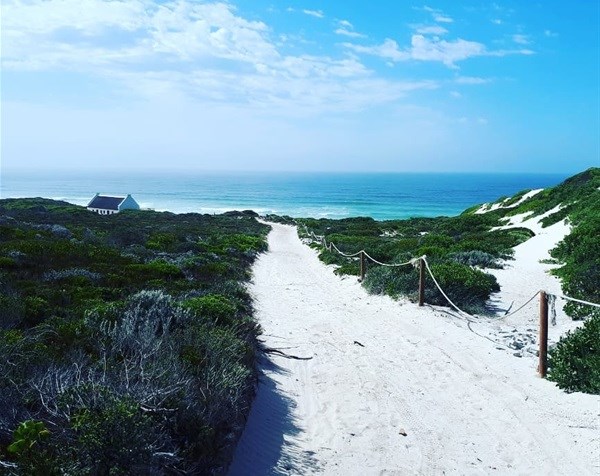
The amiable collaboration has resulted in a holiday destination that's worthy of a top spot on the bucket list of anybody seeking some R&R in idyllic surroundings. These are my top reasons to visit.
Marine conservation
The marine reserve at De Hoop, comprising over 70km of pristine coastline and extending 5km into the ocean, is a World Heritage Site and one of the largest marine protected areas in Africa.

This area conserves De Hoop’s diverse marine life forms, from the starfish, sea urchins and barnacles residing around the rocky shore to the dolphins, seals, southern right whales and at least 250 species of fish that call these waters their home.

The 19km vlei is also a Ramsar site of international Importance, where aquatic birds and other organisms can breed and feed without disturbance. The wetland is thus an ideal setting for observing the many water birds that form part of the 260 bird species found on the reserve.
The guided interpretive marine walk and eco-boat cruise offered by De Hoop Collection are recommended to gain valuable insight into these important bodies of water and the life existing within them.
Cape Floral Kingdom
Short walks or longer hikes on the reserve are a scenic pleasure considering the dazzling array of plant and animal life you’ll encounter.
De Hoop Nature Reserve is home to the world’s smallest and most threatened plant kingdom – the Cape Floral Kingdom. The reserve has the largest conserved area of lowland fynbos in the Western Cape. Of the 9,000 plant species found in the Cape floral region, the reserve and its surrounds have an estimated 1,500 species.
Free-roaming fauna
De Hoop has 86 free-roaming mammal species, like the rare bontebok and Cape mountain zebra, as well as eland, grey rhebok, yellow mongoose, caracal and the occasional leopard, and you’ll probably encounter some mischievous baboons too.
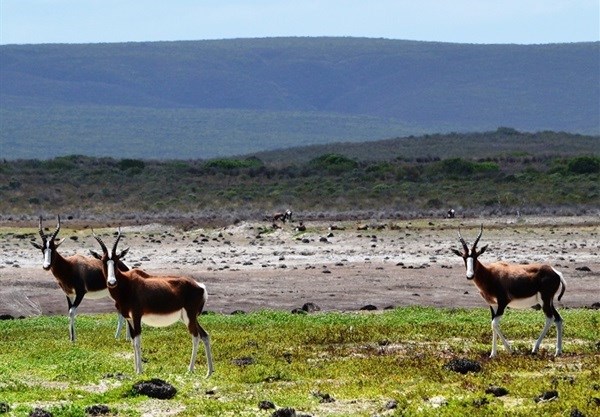
A highlight of my stay at De Hoop involved a one-hour hike up Potberg Mountain to witness endangered Cape Vultures circling the sky above the rocky gorge where they nest. The encounter is extra special because Potberg is home to the only remaining breeding colony of the species in the Western Cape.
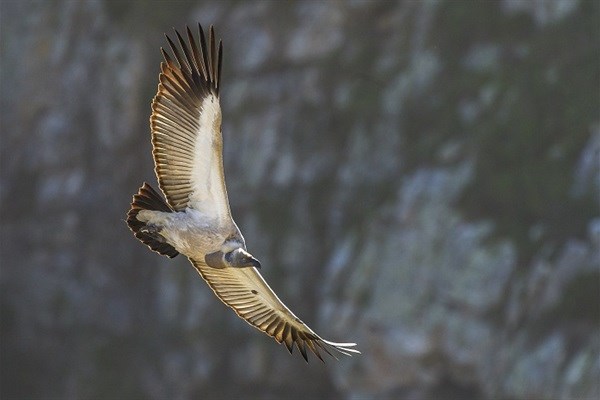
For the short but steep climb to the top, you’ll be rewarded with jaw-dropping views from a sublime viewing deck, where I could easily have spent hours gazing at these impressive birds and out over the ocean down below.
The vultures share Potberg’s cliffs and gorges with the Peregrine Falcon, Verreaux’s Eagle, Jackal Buzzard and Rock Kestrel, and close by the Black Harrier nest on the fynbos flats and Martial Eagles make occasional over-flights.
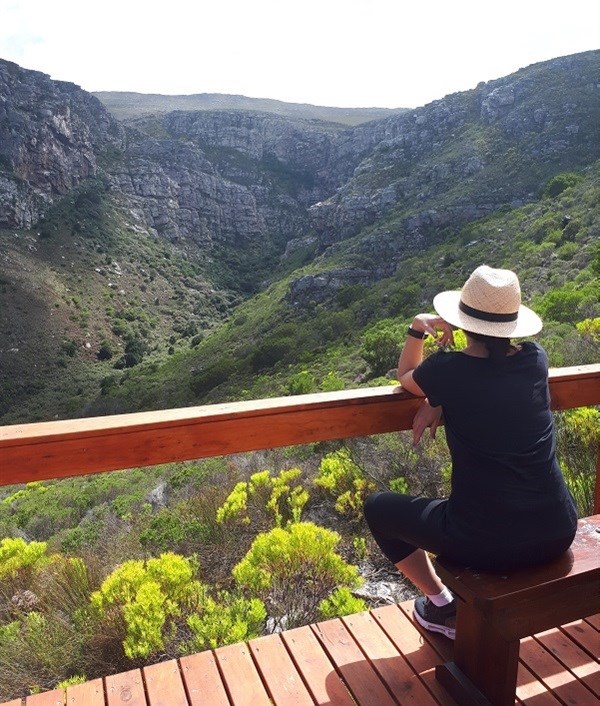
As part of the organised Potberg hike offered by De Hoop Collection, guests are treated to a generous picnic lunch under a tree on their return down the mountain.
Accommodation for every budget
Never have I encountered accommodation on one property catering to such a broad range of budgets as I have at De Hoop.
For the budget-conscious traveller who doesn’t mind roughing it somewhat, there are campsites with access to a well-maintained communal bathroom and kitchenette. A step up from that is the popular and quaint rondavels with uninterrupted views over the vlei, and there’s a host of cottages ideal for families too. For a spoil, opt to stay in a romantic suite or in one of the historical manor houses.

Despite the vast variety, none of the accommodation options fall short on quality, each one boasting classic country-style décor with delightful decorative touches that truly make it feel like a home away from home.
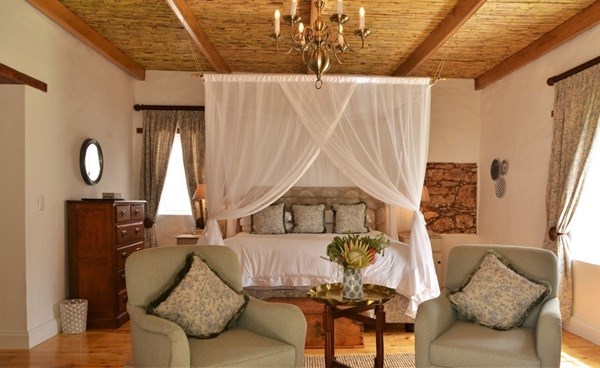
Feasting at The Fig Tree
The reserve’s on-site restaurant, The Fig Tree, blew me away. The building itself dates back to the 1800’s and is an old sheep shearing shed that has been renovated by De Hoop Collection into to a cosy and inviting space for meals, snacks and drinks day and night.
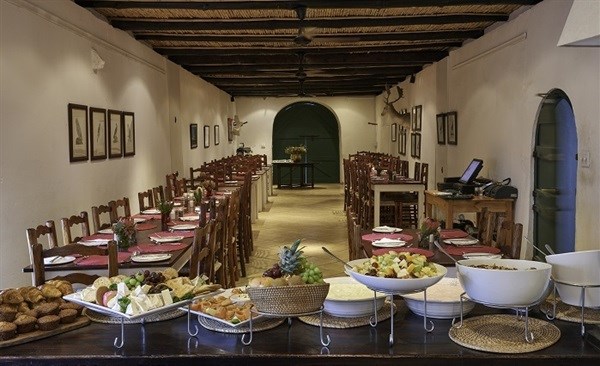
To be honest, prior to my arrival I had prepared myself for homestyle pies, wraps and soups. But with a focus on produce sourced from surrounding areas, head chef Marcia Tyobeka serves up moreish meals that offer a modern, refined take on classics dishes – think rustic roasted veggie options, delicately grilled salmon and perfectly-cooked sirloin. And an impressive wine and craft beer list to boot!
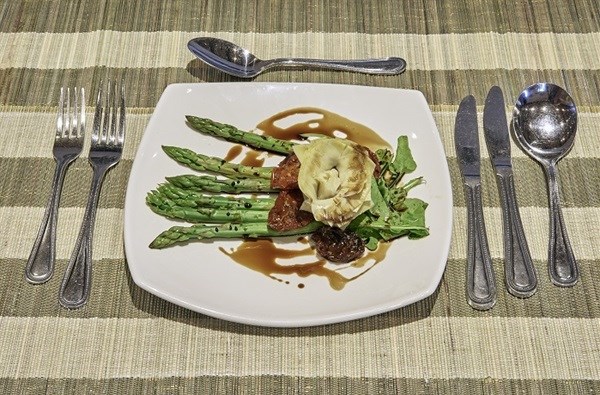
The Fig Tree Restaurant offers a la carte menus for breakfast and lunch and set dinner menus. Delicious picnic baskets can be pre-ordered as well to be enjoyed at one of the ample picnic spots scattered across the reserve.
Spa pampering
Despite being immersed in beautiful natural surroundings, some urban-dwellers may require a professional nudge to snap out of city life, in which case I’d suggest a visit to the Spa at De Hoop. Treatments offered include grooming, facials and massages using products from luxury skincare brand Elemis.

What’s more, the spa is perfectly positioned with a view of the vlei and right next to De Hoop’s sparkling new pool – which all guests have access to by the way. Views for days!
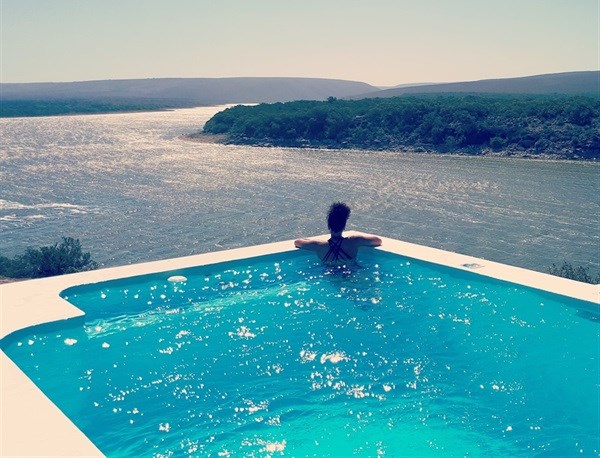
For stunning diversity in lodging, landscape and animal life, De Hoop Nature Reserve continues to reign supreme.
For a full list of accommodation and activity options, visit De Hoop Collection online. And to learn more about Cape Nature, click here.











